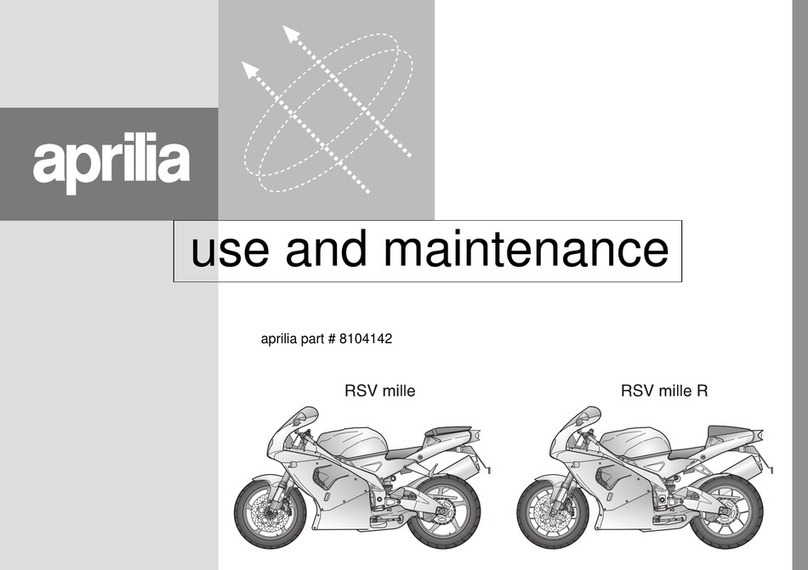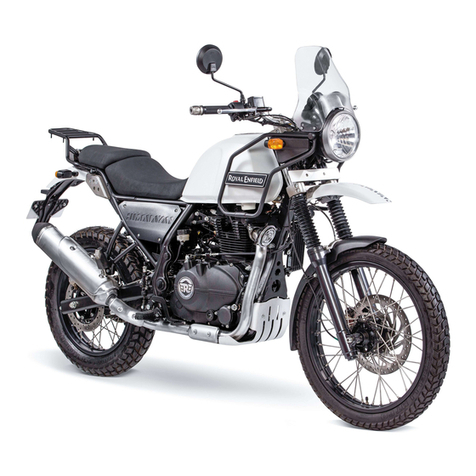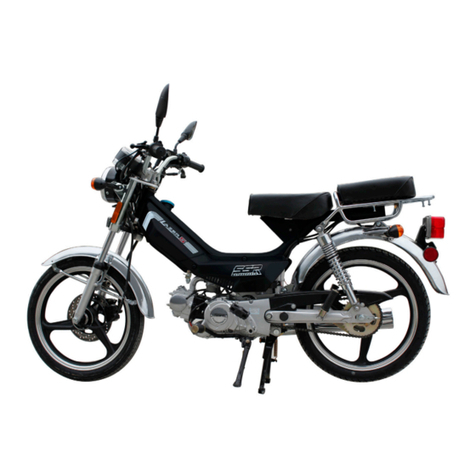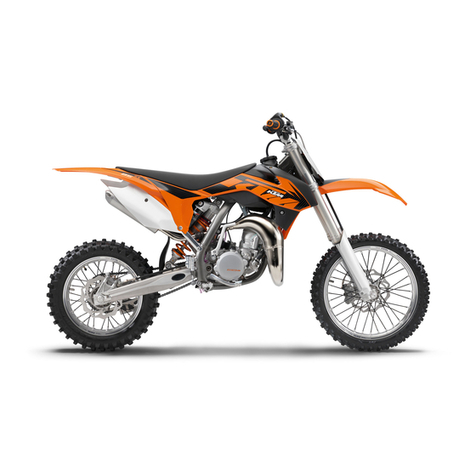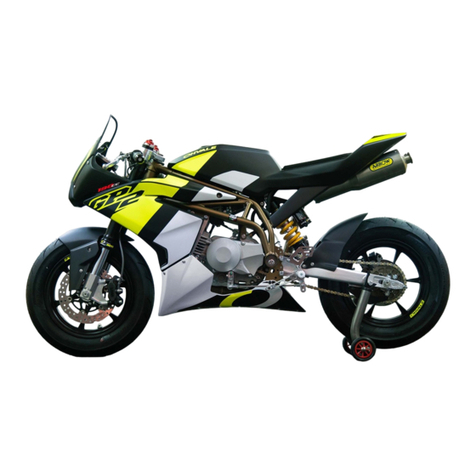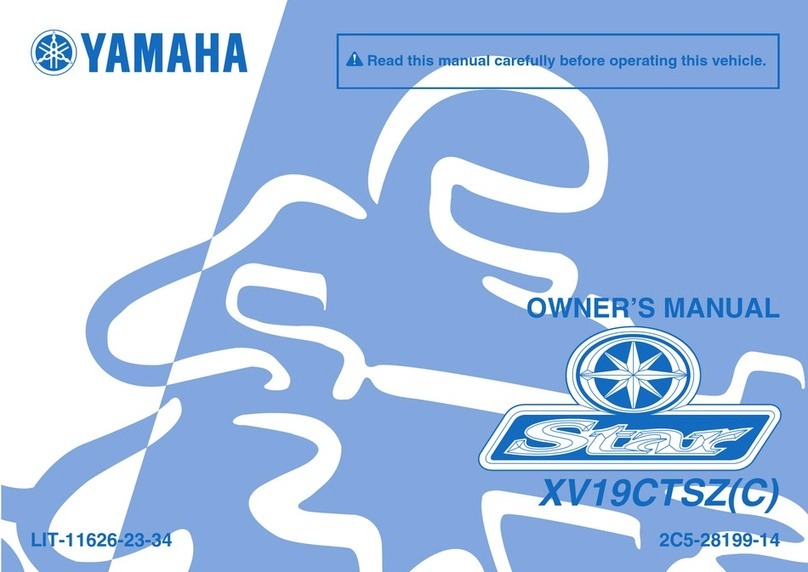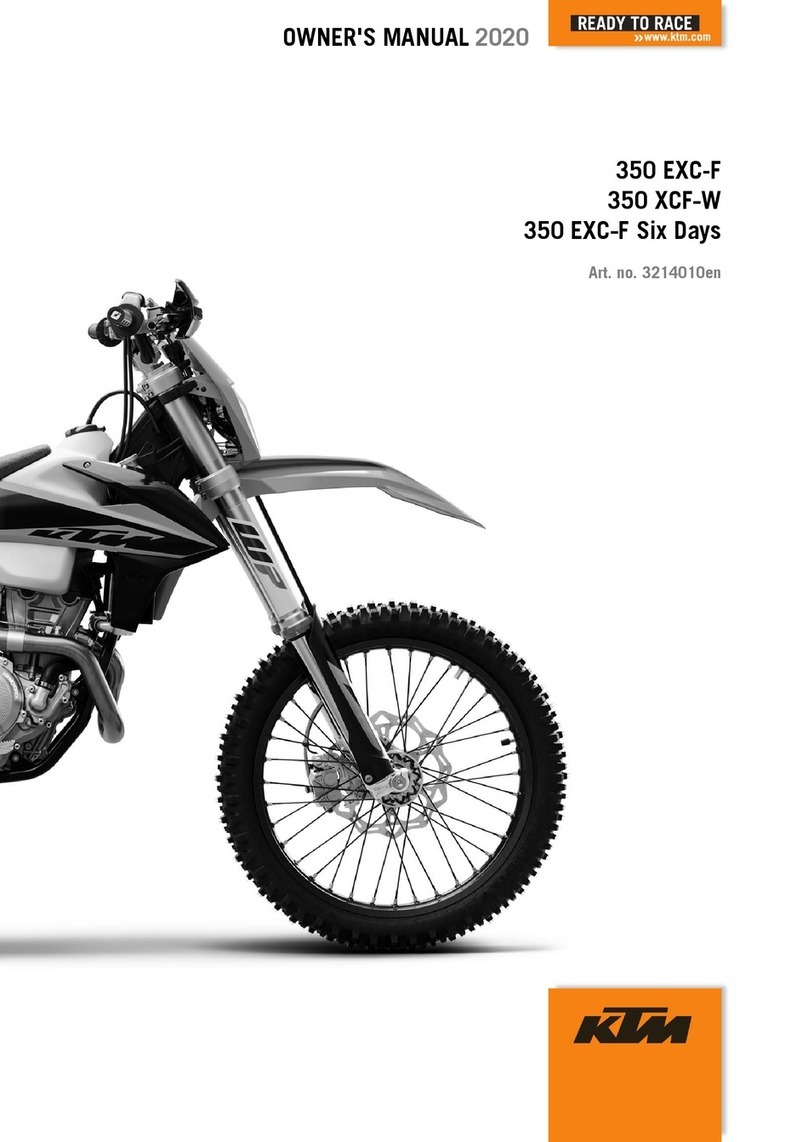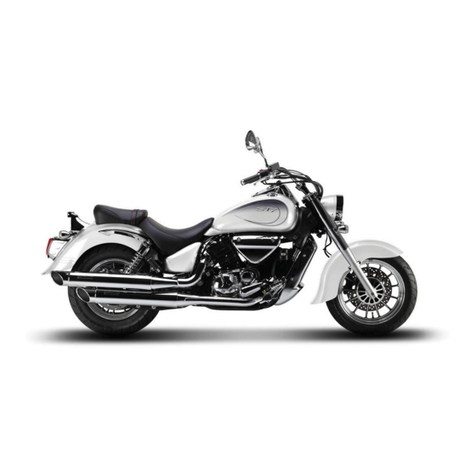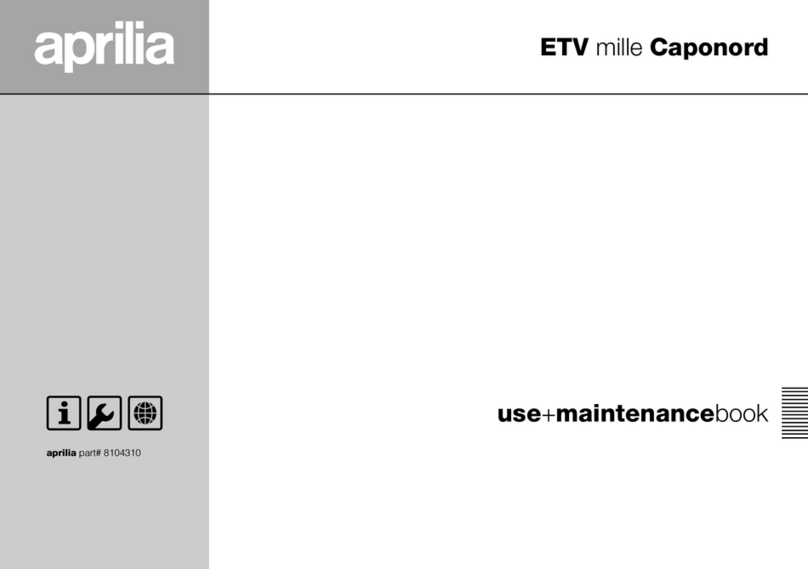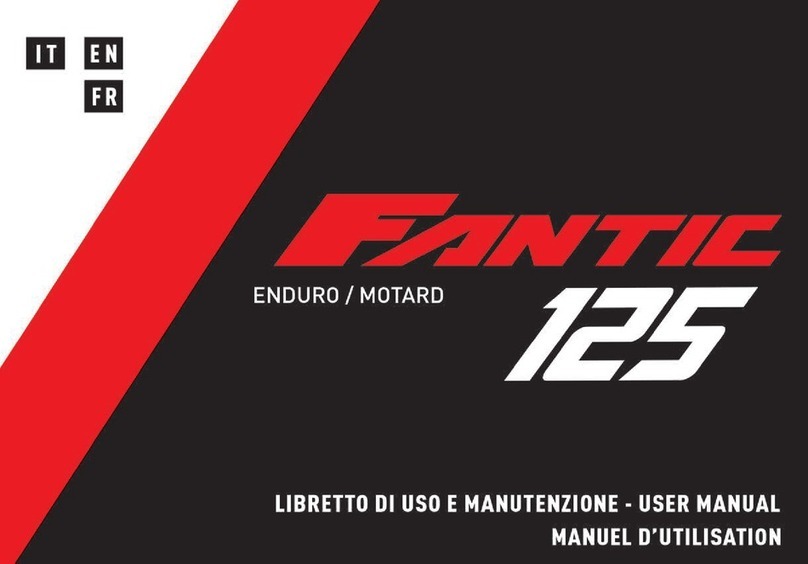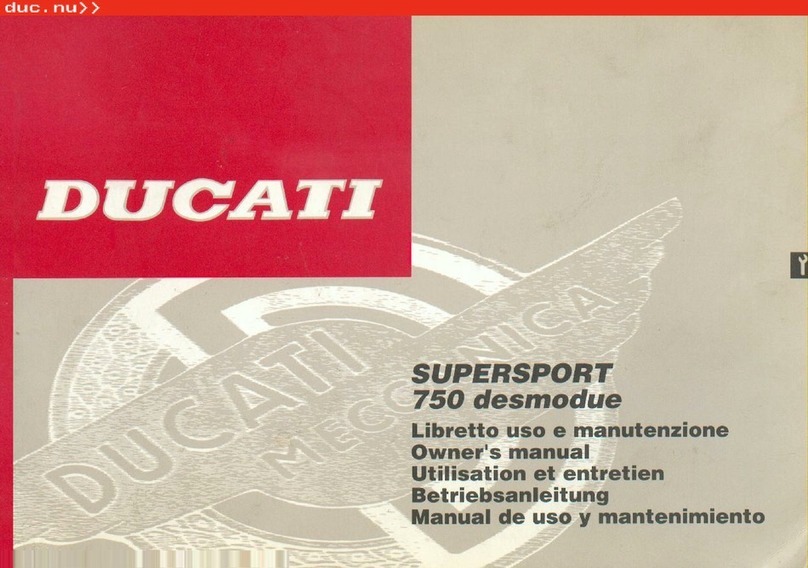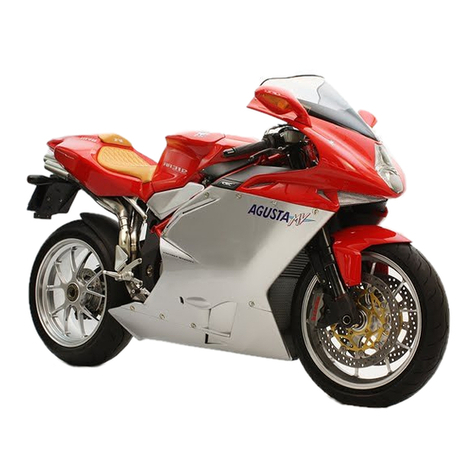Control System of the Left Grip
Clutch Grip (1)
When starting the engine or shifting, firmly
hold this grip for shut -off transmission
system and for disengagement of clutch.
Overtaking Lamp Switch (2)
Press the pushbutton down, the Hi -beam
lamp of headlight is ON. Continuously push
this switch when overtaking so that the
headlight flashes to remind that the vehicles
ahead should pay attention to be overtaken
by the vehicle in the rear.
Dimming Switch (3)
Hi -beam operation
When the dimming switch is upward moved
to (upper beam) position, the
headlight upper beam lamp is ON and the
upper beam pilot lamp on the dash board is
also ON. When the dimming switch is
upward moved to (lower beam)
position, the lower beam pilot lamp is ON.
Air-Inlet Bar (4)
When it’s difficult to start the bike, pls pull
the air-inlet bar back which will make it
easier to start the bike
Turning signal operation (5)
Push the switch to the position , left
turning signal lamp is ON and the pilot lamp
on the dash board is also flashing. Push the
switch to the position , right turning
signal lamp is ON and the pilot lamp on the
dash board is also flashing.
Horn Button (6)
Press down the button that the horn will sound.
Control System of the Right Grip
Electric Starting Button (1)
Press down the button to connect the
starting motor circuit. Place the shift handle on
the NEUTRAL position to shut off transmission
for purpose of safety when starting.
Warning
Continuously start the motor. Don’t exceed
five seconds each time. Excessively
discharging will make the circuit and
starting motor abnormally heat. Failing to
start after several times of trial, stop to
examine oil supplying system and starting
circuit system (Please refer to Section
Troubleshooting)
Engine Shutdown Switch (2)
OFF position
Change the switch over this position, the engine
will shut down. The motorcycle is unable to start
if re -starting. The switch needs to be ON for
starting the motorcycle.
ON position
Change the switch over this position, the circuit
is ON and then the motorcycle may be started.
Stop switch(3)
“”Normal situation

